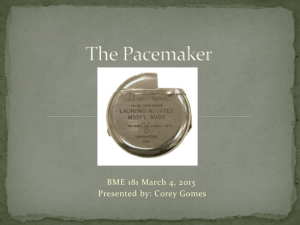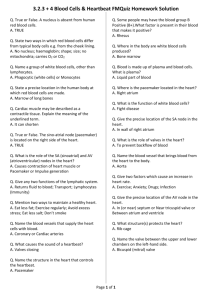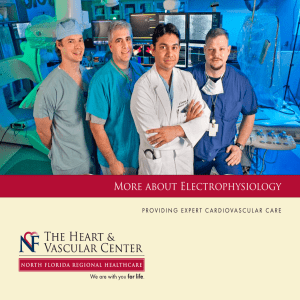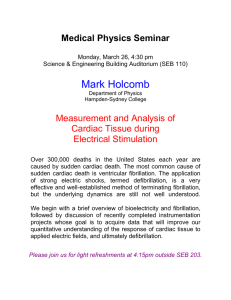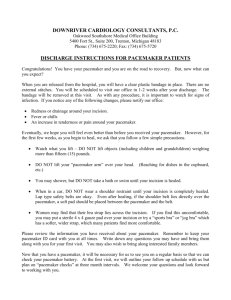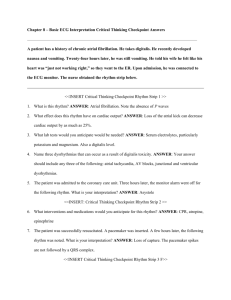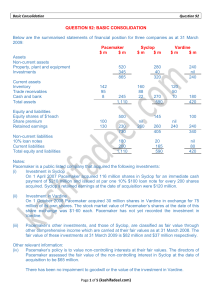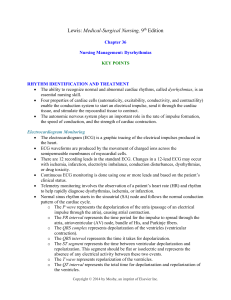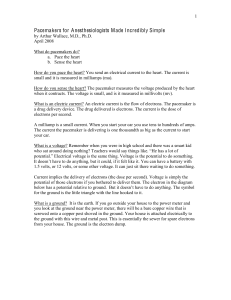New Microsoft Office Word Document
advertisement
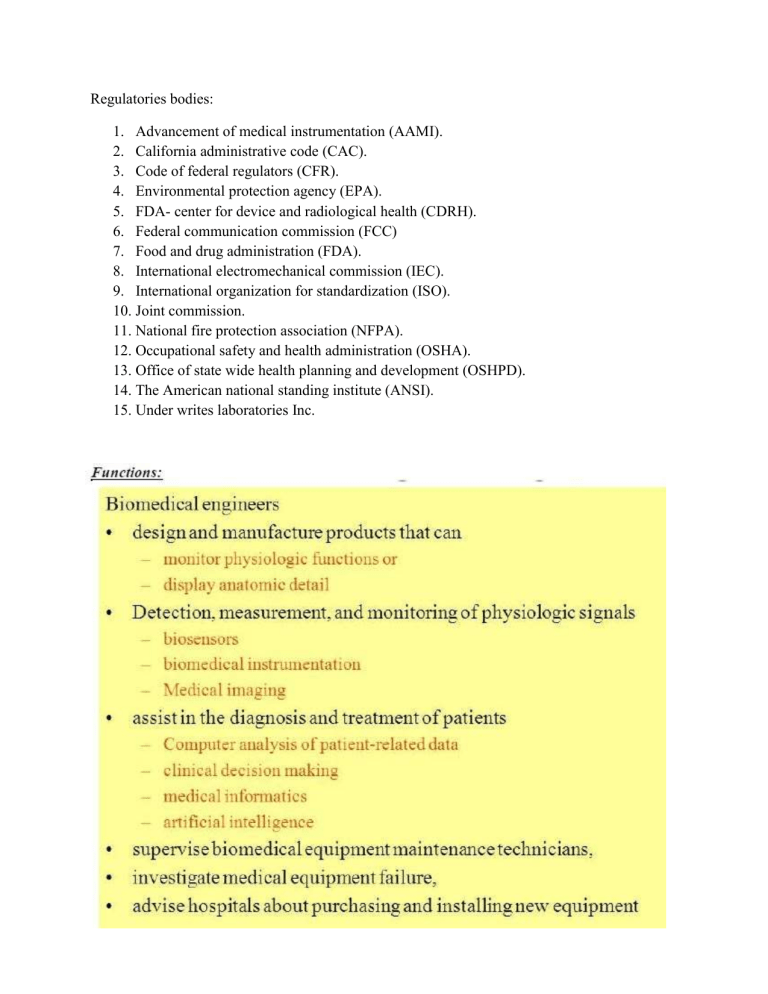
Regulatories bodies: 1. Advancement of medical instrumentation (AAMI). 2. California administrative code (CAC). 3. Code of federal regulators (CFR). 4. Environmental protection agency (EPA). 5. FDA- center for device and radiological health (CDRH). 6. Federal communication commission (FCC) 7. Food and drug administration (FDA). 8. International electromechanical commission (IEC). 9. International organization for standardization (ISO). 10. Joint commission. 11. National fire protection association (NFPA). 12. Occupational safety and health administration (OSHA). 13. Office of state wide health planning and development (OSHPD). 14. The American national standing institute (ANSI). 15. Under writes laboratories Inc. Electrode & tissue interface: The most commonly used electrode in patient monitoring and relative studies are surface electrodes. The examples are when they are used for recording ECG, EEG and respiratory activity by impedance pneumography. In order to avoid movement and to obtain a clearly established contact an electrolyte is usually employed as an interface between the electrode and surface of the source of the event. Cardiac pacemaker: the construction of caediac muscle in all animals is initiated by electrical impulse known as action potentials. The rate at which these impulse fire controls the rate of cardiac constraction, that is the heart rate. the cells creats these rhythmic impulses, setting the pace for blood pumping are called pacemaker cell, and they make up the cardiac pacemaker that is the natural pacemaker of the heart. Cardiac pace maker 3 types: primary, secondary, tersiary. Artificial pacemaker 2 types:internal & external( external 4 types: mono polar, demand,bipasic, asincronous) Artificial pacemaker: The pacemaker is an artificial rhythm driver that is implanted by medical indication. Condition of rest - the device does not send impulses to the heart, because the work of the organ is within the normal range. Activity mode is the supply of an electrical impulse through the electrodes of the heart muscle, which is provoked by a heart failure or a cardiac rhythm disturbance. Tracking mode - not observed in all models of the EKS. Provides the ability to record the work of the heart with subsequent transfer to doctors for further analysis. In this mode, the ECC will more quickly utilize the available charge, which is simultaneously used to supply electrical impulses. Using a recording device on a pacemaker, such disorders of the rhythm as atrial fibrillation, atrial fibrillation, various forms of tachycardia, ventricular and atrial changes in the rhythm, ventricular fibrillation can be detected.
